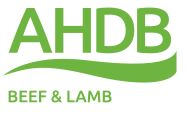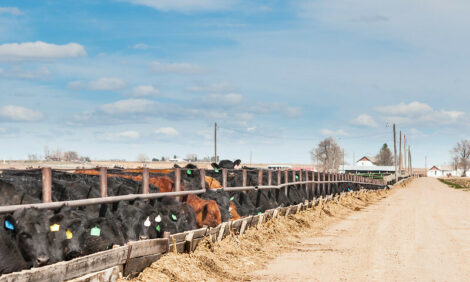



Beef Farmers Could Boost Profits Through New Breeding Tools
UK - Five new Estimated Breeding Values (EBVs) for traits that farmers are directly paid for have been developed to help farmers improve profits by producing more beef animals that meet target specification.AHDB Beef & Lamb has developed the EBVs in conjunction with Scotland’s Rural College and Hybu Cig Cymru – Meat Promotion Wales and these are now being released as the AHDB National Beef Evaluations. The five new EBVs are:
- Carcase weight (kg)
- Carcase conformation (EUROP classification)
- Carcase fat class (EUROP classification)
- Slaughter age (days)
- Average daily carcase gain (kg)
Alex Brown, AHDB Beef Breeding Projects Manager, said: "This is the first set of EBVs for traits that farmers are directly paid for, so they are useful to commercial as well as pedigree farmers.
"Considering a sire’s carcase figures when selecting calves for rearing is an example of how commercial farmers could use them to purchase better-performing cattle. However, it is important to consider this new data alongside other EBVs when selecting individuals for breeding. For example, animals of high carcase merit should not be chosen to the detriment of health and fertility traits such as calving ease.
"We are seeing high levels of variation within all beef breeds for the new traits, so all breeds have the opportunity to make genetic progress in this area. The EBVs are expressed on two bases, native and continental, so EBVs can be compared between animals of the same breed type."
The new EBVs have been calculated by combining data from abattoirs, British Cattle Movement Service (BCMS) and breed societies. The abattoir data currently covers 40 per cent of the national kill and more than two million carcase records for both purebred and crossbred animals have been used to develop the EBVs.
The same data sources have been used to develop AHDB Dairy’s Dairy Carcase Index, which was launched in April, meaning it is now possible to select for improved carcase in both beef and dairy animals. This development means farmers can look at the Dairy Carcase Index of the maternal grandsire as a further indication of carcase performance when purchasing beef/dairy crosses.
The new EBVs are freely accessible by searching by eartag or pedigree name via https://egenes.co.uk/carcassdata
An agreement with the Agricultural Business Research Institute (ABRI) means users can access data from the breed’s BREEDPLAN results for individual animals, meaning all the information is in one place. This link is already live for Beef Shorthorn, British Blue, Charolais, Simmental and South Devon breeds, with a plan to roll out to other breeds in the near future.
Mr Brown said: "This is a great step forward for breeding beef animals for better carcase quality. However, the production of these EBVs relies on sire details being recorded on passports to be able to identify genetic links between bulls and recorded progeny.
"In the development of these EBVs there were two million records that could not be utilised because the sire was not recorded in BCMS, so genetic links could not be made.
"We are urging farmers to make sure they record known sires when registering animals with BCMS as this is the best way to improve the range and accuracy of these EBVs."
AHDB Beef & Lamb has produced a Suckler Breeding Plan to help farmers record sires used on groups of animals if they don’t have computer software. This can be found at http://beefandlamb.ahdb.org.uk/returns/ or email [email protected]
More information on carcase trait EBVs can be found at by clicking here.



